Extension tubes are a useful accessory that allows you to shorten the minimum focus distance of a lens by moving it further away from your camera’s sensor. In other words, it allows you to get closer to your subject and often create macro-like images without the need for a dedicated macro lens. If you aren’t yet familiar with extension tubes, I would first encourage you to read my guide: The Ultimate Guide to Extension Tubes.
Having read the guide, or perhaps you already know all about the tubes already, you’ve obviously come to the conclusion that you’d like to buy some because they’re clearly very useful, and also a great value accessory to help you capture different images with existing lenses. Once you reach that conclusion, every Canon shooter is then faced with this next question: “Should I buy the official Canon extension tubes, or should I buy a cheaper third-party set? What is the difference?”.
It’s not possible to compare every single kind of third-party extension tube, but by far the most popular ones are those made by Kenko. In this post we’re going to compare the pair of Canon extension tubes, with the set of three Kenko extension tubes that cost about half as much money.
Canon sell a 12mm extension tube and a 25mm extension tube. Tubes can be stacked together create various combinations, and the thicker the stack of tubes, the closer the MFD moves towards the front element of the lens. Kenko don’t sell the tubes individually as Canon does, but instead sells them as a set of three tubes that have 12mm, 20mm and 36mm thicknesses. Again, you can stack these together in any combination to create new thicknesses.
The Canon EF12 II sells for about $80 and the Canon EF25 II sells for about $135 which gives you a combined price of $215. The set of three Kenko extension tubes sells for just $110, essentially half the price!! Given the fact that these tubes contain no optics in them at all, you can begin to understand why everyone considers this question when it comes time to make the purchase. Why should Canon air be more expensive than Kenko air?
Video Review
Don’t like words? Here’s a video instead.
Canon or Kenko?
As you can see in the set of images below, the physical differences between the Canon and Kenko extension tubes are very small. If you pick them up blindly with the lens caps removed, it’s essentially impossible to tell them apart by weight alone, and both brands feel equally well made in all but one area. That one area where the Kenko tube feels quite different is the lens release lever. Externally the levers look very similar, but the Canon lens release lever is definitely far smoother. I never actually had any lens release problems with the Kenko ones, but the lever action felt creaky and stiff compared to the much smoother Canon version. In every other design respect on the tubes themselves, it has to be called a dead heat. I was genuinely impressed by how similar the Kenko tubes were to the Canon ones.
You may have noticed that I prefaced the statement in the previous paragraph by saying “with the lens caps removed”. This is because the caps are very different on the Kekno tubes as you can see in the image at the very top of the article. The Kenko caps are clearly much cheaper than the standard Canon ones and whilst they may just be dust caps for an empty tube, their poor quality feel did bug me to the point where I just put some spare Canon ones on them instead. Lens caps are cheap, and most people have a couple of spares lying around so it’s not a huge deal, but I do think it’s worth a mention. With the caps removed, the two products feel almost identical, but the poor quality caps actually lowered my overall impression of the Kenko ones at first because I initially examined the tubes with the caps on. The caps made the whole product feel more cheaply made at first touch.
I’m pointing this out so that if you decide to examine them both in a store to make your decision, make sure you take all the caps off them to level the playing field!
One thing that’s also worth a discussion is exactly how many extension tubes you really need? It’s nice that the Kenko ones come as a set of three, but there is a danger that the perceived usefulness of three different tubes may cloud the comparison somewhat. Personally I think that many people can get away with a single tube, or two at the most. In my time experimenting with these two sets, I thought the Canon combination of a 12mm and a 25mm was perfect. I never needed three tubes, and in fact I would almost certainly never use the Kenko 36mm tube if that was the set that I owned. With a 12mm and a 20mm (kenko) you can stack them to get a 32mm and that seemed to be large enough for most things. I do realize that some people will find a use for the larger one, or larger stacks that contain the 36mm one, but I don’t think this would be the majority of people.
In terms of autofocus speed, I couldn’t see any discernible difference between using the Canon or Kenko tubes. To be honest, most of the lenses I tested them on all seemed to slow down a little bit when focussing on things that were right on the edge of their MFD but it didn’t seem to be a Canon Vs. Kenko difference. Whenever I tired to do a blind AF speed test, I was always left unconvinced which tubes I was using. If there’s any difference, it doesn’t appear to have a noticeable effect in real world usage.
Conclusion
I have to say that I was very impressed with the Kenko tubes and it’s clear to me that they are a better buy than the Canon ones for the vast majority of people who are looking to get macro-like images from from smaller lenses. Having said that, I would, in fact do, own the Canon tubes. The reason is simple: I’m using these extension tubes on lenses that cost upwards of $10,000 when they are on my super telephoto lenses. If I think there’s even a 1% chance that the Canon ones might be a fraction stronger, or more roust than the Kenkos, I’m going to spend the extra $100 to buy the Canon ones. It’s just not worth taking any risk at all for such a fractionally small amount compared to the value of the lens, and potentially the value of the trip that I’m using the lens on. I mentioned that the lens release lever on the Kenko tube doesn’t feel as good as the Canon one, and that alone is enough for me to stick to the official ones over the third-party ones. The last thing I want is to find that in cold weather, the release mechanism fails and the locking pin jams into my super tele lens rendering it useless. Of course this could happen to the Canon ones as well, but having felt the mechanisms in both of them, I’m definitely less confident in the Kenko ones.
As I said, for most people I think the Kenko ones are going to be a better buy, though. If you are putting them on a short zoom lens, or a short prime lens like a 50mm, then the Kenko tubes will perform exactly as the Canon ones do. I don’t think you really need all three of the Kenko ones, so I do wish they sold them individually, which would allow you to buy just two of them and save even more money. I suspect that Kenko knows you don’t really need all three, and that’s exactly why they sell them to you in this way. Regardless, I was impressed with them, and I didn’t expect this to be my conclusion at all. I always knew the Canon ones would be right for me personally, but I didn’t expect the Kenko ones to be such a good copy of the Canon ones to warrant my recommendation to most people. I like it when I’m surprised! Even more so when it means it’s going to save you guys some money!
Where to Buy
I always appreciate it when you use my links to make your purchases. Canon and Kenko extension tubes can be purchased using the links below. Note that Canon only makes extension tubes for its EF lenses. You must choose Kenko’s extension tubes if using RF lenses for Canon’s mirrorless system.
- Canon Extension Tube EF 12 II – B&H Photo / Amazon / Adorama / WEX (UK)
- Canon Extension Tube EF 25 II – B&H Photo / Amazon / Adorama / WEX (UK)
- Kenko Extention Tubes for Canon RF Lenses – B&H Photo / Amazon / Adorama
- Kenko Extension Tubes for Canon EF Lenses – B&H Photo / Amazon / Adorama / WEX (UK)

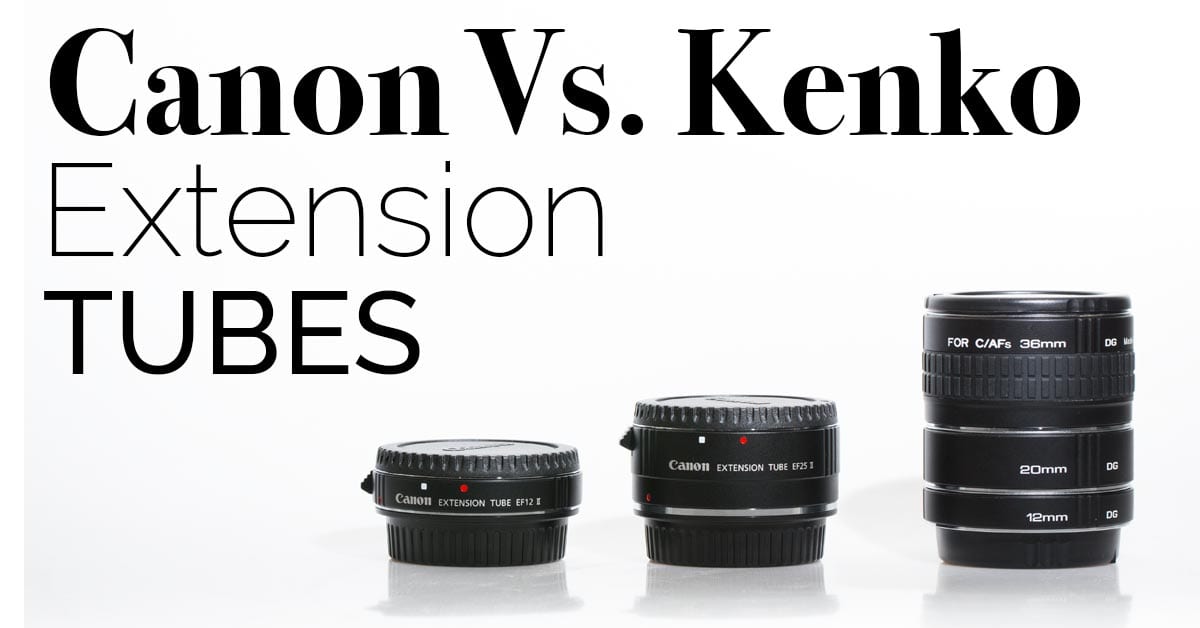
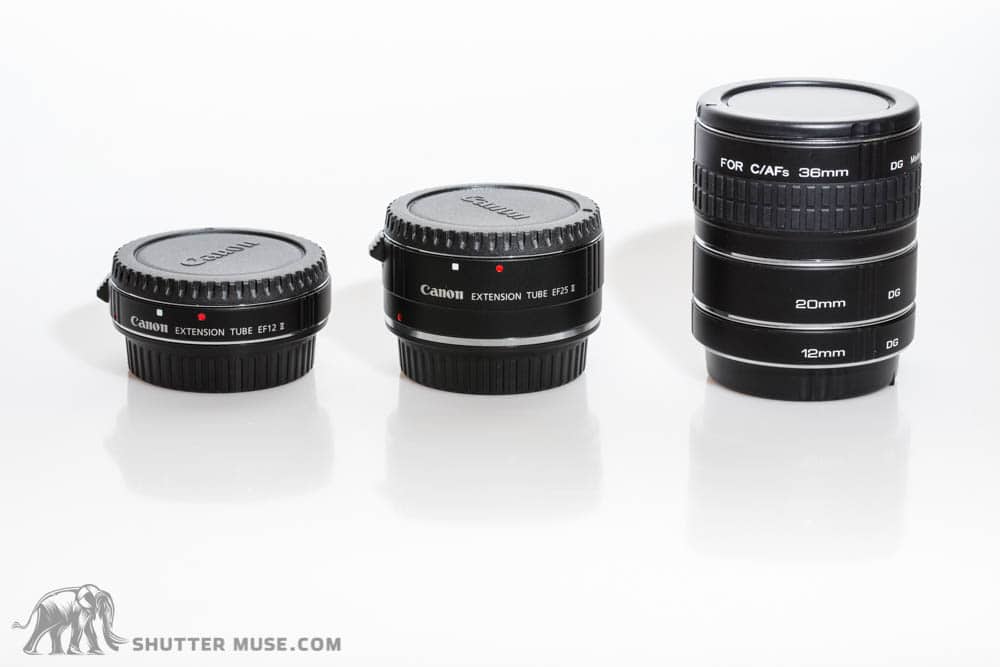
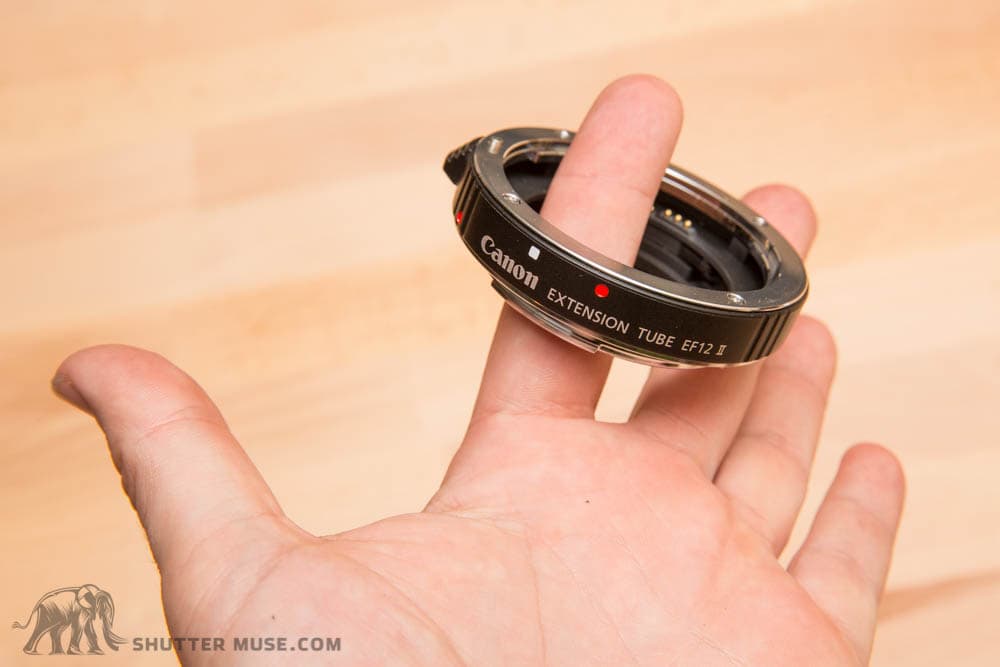

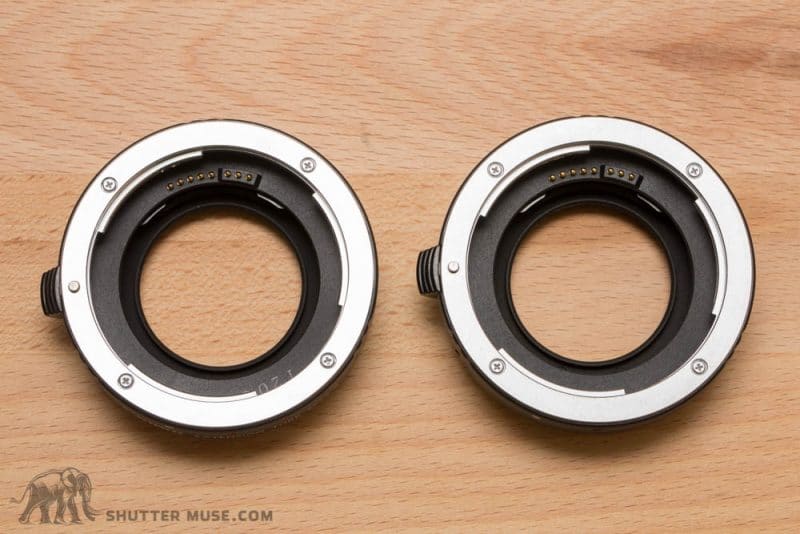
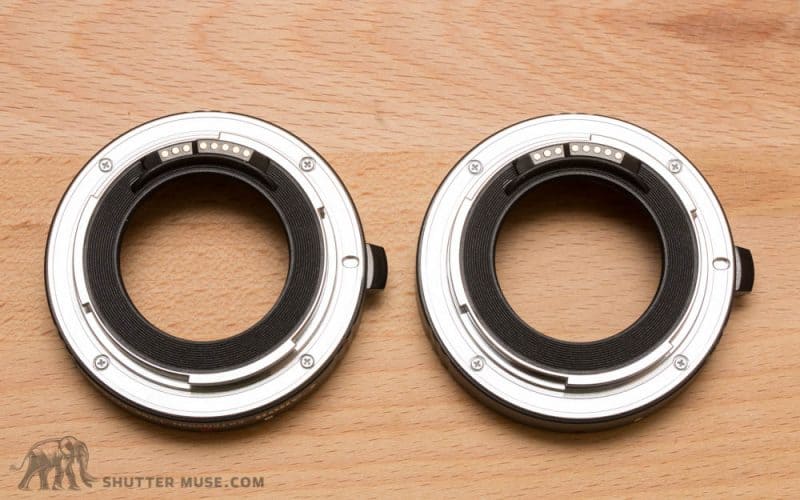

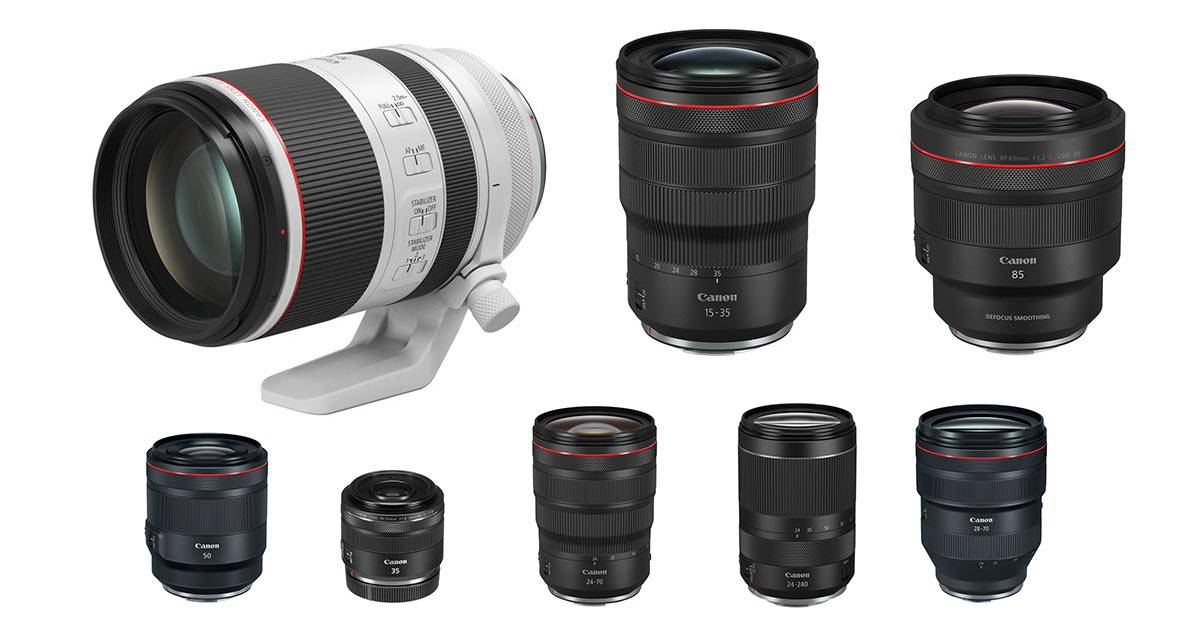
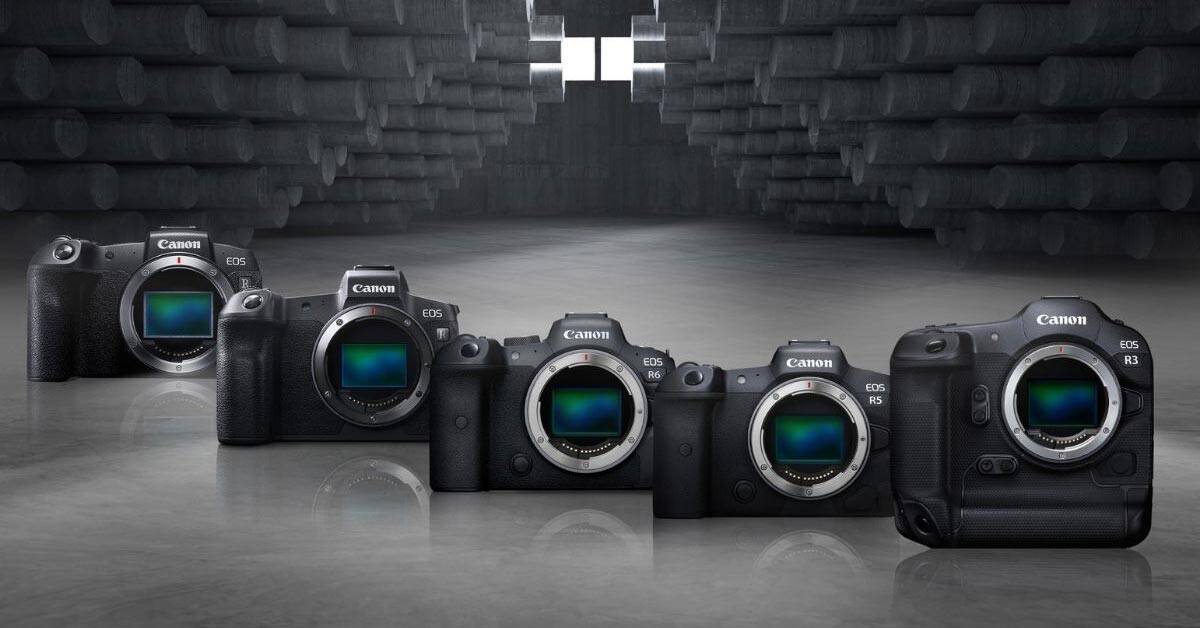

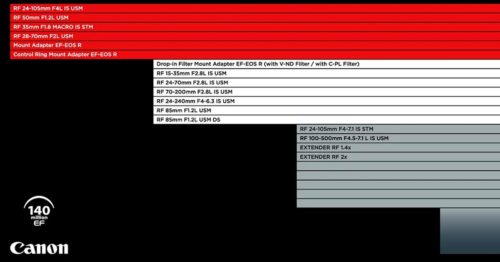
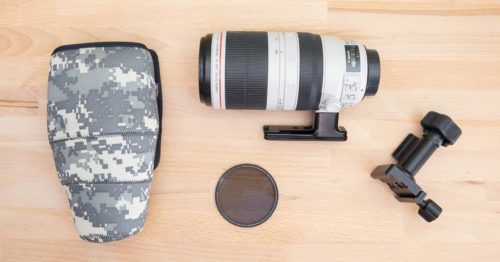
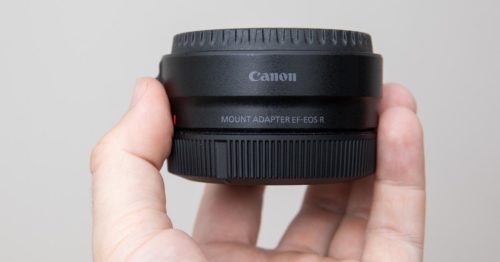
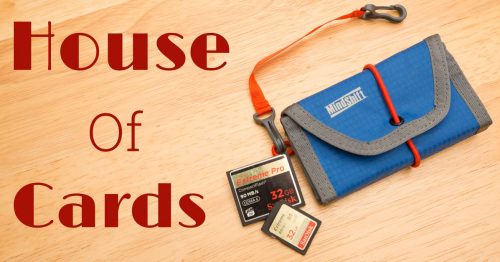

Hi Dan,
Great article!
I’ve been using Kenko tubes for nature photography for a decade.
I’m writing to you for three reasons.
1) You did not discuss a situation I’ve seen others discuss, and I’ve experienced myself: play due to a loose fit between the tube and the camera/lens. This play probably doesn’t result in enough tilt of the lens relative to the camera to make much of a difference in the resulting image, but it is a bit unnerving when you’ve got a pricey lens and/or camera. I haven’t used the Canon tubes, but I’ve seen some reviews stating that they have some play, too. If there is a difference between the two brands in this regard, it would be great to include it in your article.
2) I have found that after about 5 years of heavy use, the Kenko tubes begin to give me camera errors due to poor electrical contact between the tube and the lens/camera. I don’t consider this a shortcoming. The fact that they cost $140 and give me so much service is quite a bargain! But the most recent set I bought had this problem right out of the box, and I’m having issues with Kenko honoring their warranty. If you have noticed any difference in the two brands in this regard, or if you’ve gotten any feedback from users, this would be helpful to share with readers. Right now I’m considering switching to Canon because of my terrible experience with the latest Kenko tubes right out of the box.
3) You state that you don’t see a use for the 36mm Kenko tube, though you posit that some readers might. I absolutely use the 36mm tube. And I sometimes use all three stacked. If there were a reliable 50mm auto extension tube, I’d buy it in a second! My usual set-up for skittish wildlife such as butterflies is a 70-200 lens + extension. For low-quality shots useful for IDing a subject at a later time, I may use just the 12 or 20 mm tube. If I find a cooperative subject and want a high quality macro shot, I will use the 36mm tube, possibly stacked with others. If I’m in the field with this set-up only, and I find something really small such as a butterfly egg, all three Kenko tubes with my lens set at 70mm gives me decent macro capability without needing to carry a dedicated macro lens. I just bought the 100-400 and I’m looking forward to trying it out in the next few months. With the longer focal length of this lens, I’ll sometimes need even more extension. The 36mm tube on the 100-400 lens may end up being my default set-up, and I’ll certainly use all three tubes stacked for more cooperative subjects. And all three tubes stacked on this lens set at the 100mm focal length will give me good macro capability for truly tiny subjects. In summary, for my purposes, the Kenko set with all three lengths is great, and I would prefer an even longer tube as well. I feel like there is less play in the system, and more security for my camera/lens with one long tube rather than multiple shorter stacked tubes.
Thanks again for your great article!
Hey Paul. Thanks for writing in. I’ll try and tackle these things below.
1. I own the Canon tubes, the Kenko ones were on loan for purposes of testing them, there’s zero play in my Canon tubes, and I didn’t experience any in the Kenko ones during testing either which is why I didn’t mention that topic. Not saying everyone else is wrong, just that if there are tolerance issues then it’s not in every one of them.
2. That sucks that they aren’t honouring their warranty! Since I only used the Kenko ones for about two months before returning them, I can’t comment on this as I never had this problem and have not had it with my Canon ones. I haven’t been aware of this being a general issue with the Kenko ones – have you found others that experienced it?
3. Wow that’s great to hear. I guess I hadn’t really thought about them being used for macro with such long lenses. Thanks for educating me! For your 100-400, you might want to have a look at the Canon close-up lens that screws on the front of the lens, instead of using tubes. I hear it’s a popular option.
I really liked the info in option 3 as I have 4 lenses at this point: 16-36 f4L IS, 24-70 f4L is macro, 70-200 f2.8L is II, and a 100-400 f4.5-5.6L is.
Would the Kenko 36mm tube be best for the longer lenses at the lower setting? Or, the 36 and stacking the 10 and 36 for longer telephotos? And if you get vignetting, then can you just crop that?
One big are of concern aside from this is I have tried many different products for lens cleaning and the only thing that comes close to cleaning them is the Zeiss Lens Wipes. All the brushes leave a residue. Even the lens pen set leaves a residue. I am frustrated and baffled on what to do!
I just got a pro optic 500D 77mm close-up lens that incorporates a double-element achromatic design (Adorama) for $109 new. It is heavy glass! Can’t wait to use it this week. Not sure how many stops it will take and might I have to use an ND filter.
Lastly, ND filters. What is the best range to have? an have a variable ND2-ND32, 5-stops. It was not enough, so I had to use a CPL to get the effect that I wanted and it was good, but not dreamy enough on the cascading waterfall. Hopeful, you have a write-up on this topic.
I too, just found your site today and signed up! Thanks for this post. It was incredibly helpful.
I just bought my rig with a Canon 6D MKII along with the lenses above. I am getting ready to buy the Canon EF 25 II and the EF 12 II. They are expensive. I am like you wanting the right stuff! BUT, I ordered the FOTODIOX Pro Auto tube that you use with an EF 24-70/4L and the 70-200/2.8L II? Opinion?
I know this is long and all over the place. I need all the help that I can get! Thanks again!
I often come up with a great idea that is simply reinventing the wheel, so pardon my ignorance. I just stumbled across your website. Fantastic discovery. Thanks for great information. I’ll be checking back regularly.
Very useful information. I had the original Canon EF 12 ii and the old Kenko uniplus 25. The 25 turned out to be used more often. And yes. Stacking them with the 300L is a great idea for insect images.
I agree the workmanship of the Canon is awesome. Did not have issues with Kenkos release button and found they are manufactured properly as well. But I am concerned about the contacts issue. I did not experience them with the tubes but with a Kenko teleplus 2x. My ef 135L lens did not autofocus with it and started to hunt. I was shocked first time because I thought to have ruined my expensive lens. But luckily no issues with my Canon Extender 1,4x ii. I bought the first original Canon 2x Extender from the late 80ies as a replacement for the Kenko. Works perfectly with my 135L. Ok. Tubes are different from teleconverters. But can’t forget the painful experience.
Hi Dan,
can the Kenko extensions be used on the L series lens such as Canon EF 100-400 mm f/4.5-5.6L IS USM lens? or would I need to use the Canon extensions?